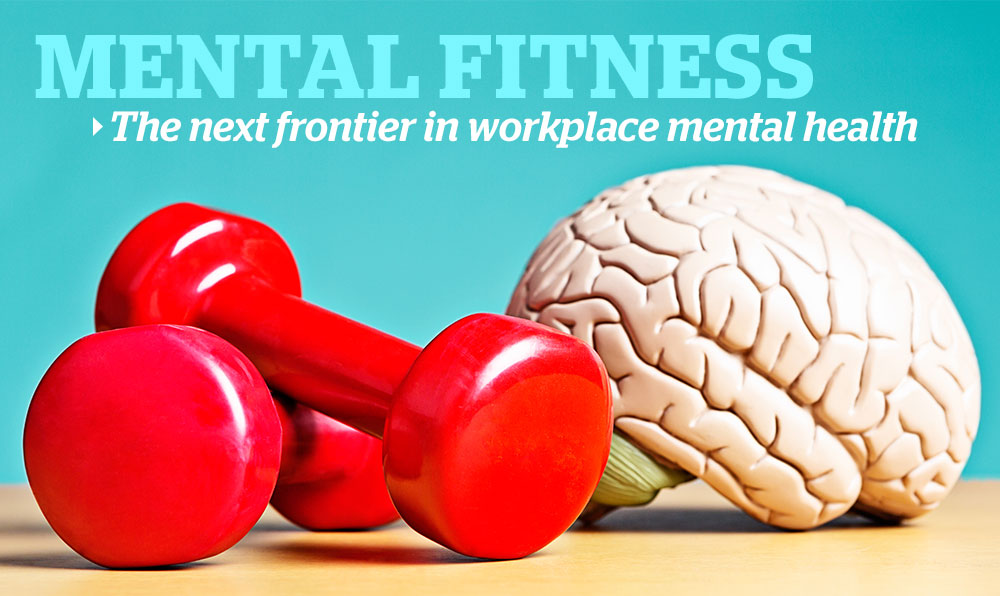

Features
Columns/Blogs
Mental Health
Building the business case for investing in mental fitness
By Bill Howatt

EDITOR’S NOTE: ‘Mental Fitness: The next frontier in workplace mental health’ is a weekly series, in partnership with Dr. Bill Howatt of Howatt HR Consulting in Ottawa. This series takes a deeper look at mental fitness — an approach to prevent mental harm and promote mental health.
Should we care about employees’ mental health? That is a question each employer must answer.
It’s a simple yes or no. If yes, words matter but actions matter more.
Sometimes even a leader who says yes and cares will want to understand the potential return on investing in mental health compared to doing nothing.
Money may not be one leader’s primary motivation to act. But without a business case, another may stall or not invest, and others may begrudge or do as little as possible to create an illusion that they care.
Mental fitness strategy context
Investing in a preventive mental fitness strategy is no different than paying for car maintenance. If you want your car to work well, it is critical to adhere to its preventive maintenance plan.
Those who maintain their vehicles know that investing in prevention is much more cost-effective than waiting for things to break.
Not all cars need the same maintenance and mental health is no different. Every employee has their own needs and wants.
What is consistent is that it is less costly and damaging to focus on prevention than to wait until employees break down due to a mental health concern.
COVID collateral damage: Why mental fitness matters now, more than ever
Why mental fitness matters
The primary focus of mental fitness is to allow employees to design their individual mental illness prevention plan.
For leaders who need evidence of the benefits of investing in mental fitness prevention, I will share some data from our Mental Fitness Index (MFI) database.
MFI is an evidence-based tool that provides employees with their mental fitness score, as well as insights on their current program’s effectiveness, perceptions of psychological risk factors and hazards, lifestyle choices, perceptions of leaders as psychologically safe, productivity and experiences with respectful workplace concerns like incivility and workplace violence.
Productivity of employees who self-report being charged is drastically different than that of those who report being half to fully drained in the workplace.
MFI productivity data includes presenteeism, discretionary effort and attendance that is captured as a cost metric called the “cost of doing nothing”(CODN).
The estimated annual cost of employees who fall in the charge category is $6,000 above salary and benefits. This compares to $13,000 for those half drained and $19,000 for those fully drained.
MFI research indicates that the higher the employee’s charge, the more they thrive across many areas: higher employee experience, less stigma, better job satisfaction, more positive mental health outlook and lower cost of doing nothing.
We also have learned that employees who regularly engage in mental fitness are more likely to be more charged than those who do not.
Business case for mental fitness
Deloitte’s report on the ROI in workplace mental health programs claims the median yearly return on investment on mental health programs is $1.62.
When making an investment, it is helpful to consider the ROI and to create modest assumptions. I learned working on Wall Street that it is often wise to be ultra-conservative and to allow for upside in estimating.
Before investing in a 12-month mental fitness strategy, estimate your cost of doing nothing.
As a case study example of Company ABC with 400 employees, using the above CODN by charge level, the following table shows the estimated CODN:
| Employee charge | Number of employees | CODN metric |
| Fully charged | 100 | $600,000 |
| Half drained | 200 | $2,600,00 |
| Fully drained | 100 | $1,900,000 |
| Estimated CODN | $5,100,000 |
The organization’s CODN of about $5 million does not include disability and drug costs due to mental illness or the spillover effect that employees with unsupported mental health concerns can have on peers. The five-year estimated run rate appears to be over $25 million.
When making a mental health investment, consider the CODN, investment and targeted ROI.
When asked by employers what we suggest they invest per full-time equivalent to implement a mental fitness prevention strategy, I often respond with, “Would you invest a half day’s pay per employee to get at least $1.50 return on every dollar?”
Using the case study example, if the average employee made $350 a day, including benefits costs, and the employer invested $175 per employee in mental health prevention strategy, the total cost of the program would be $70,000.
Assuming not all employees would fully engage, if over 12 months the employer got a one per cent improvement rate in CODN, this would provide around $1.50 ROI.
Keep in mind that this number could be much larger, especially if this program were repeated year over year.
The Deloitte report suggests that the longer mental health programs are in place, the greater their potential to be effective.
 Dr. Bill Howatt is the Ottawa-based president of Howatt HR Consulting and the former Chief of Research and Workforce Productivity at The Conference Board of Canada.
Dr. Bill Howatt is the Ottawa-based president of Howatt HR Consulting and the former Chief of Research and Workforce Productivity at The Conference Board of Canada.
The next article in this series will introduce considerations for designing a mental fitness strategy. If there is a particular microskill or topic you would like to see Dr. Howatt write on that supports employees’ mental health in the workplace please send your ask to Talent Canada editor Marcel Vander Wier.
Print this page